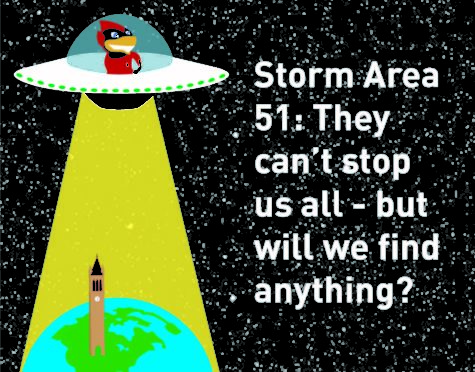5 things about the meteor and the asteroid
February 15, 2013
More than 1,000 people are injured in Russia as the result of a meteor exploding in the air. The energy of the detonation appears to be equivalent to about 300 kilotons of TNT, said Margaret Campbell-Brown of the department of physics and astronomy at the University of Western Ontario.
Meanwhile, an asteroid is set to approach Earth, but not hit, at about 2:25 p.m. ET.
You probably have some questions about that, so here’s a brief overview:
1. Are these events connected?
The meteor in Russia and the asteroid approaching this afternoon are “completely unrelated,” according to NASA. The trajectory of the meteor differs substantially from that of asteroid 2012 DA14.
“Information is still being collected about the Russian meteorite, and analysis is preliminary at this point,” according to the NASA website. “In videos of the meteor, it is seen to pass from left to right in front of the rising sun, which means it was traveling from north to south. Asteroid DA14’s trajectory is in the opposite direction, from south to north.”
2. What’s the difference between an asteroid and a meteorite and other space rocks?
According to NASA, here’s how you tell what kind of object is falling from the sky:
Asteroids are relatively small, inactive rocky bodies that orbit the sun.
Comets are also relatively small and have ice on them that can vaporize in sunlight. This process forms an atmosphere and dust and gas; you might also see a “tail’ of dust or gas.
Meteoroids are small particles from comets or asteroids, orbiting the sun.
Meteors are meteoroids that enter the Earth’s atmosphere and vaporize, also known as shooting stars. When we talk about what happened in Russia, and the images and sounds associated with it, those come from a meteor.
Meteorites are meteoroids that actually land on the Earth’s surface. The pieces of the meteor that exploded in Russia are meteorites.
Generally meteorites are smaller than grains of sand and vaporize on passage through the atmosphere. But there are also larger meteorites.
Comets and asteroids are left over from when the solar system formed. There used to be more of them, but over time they’ve collided to form major planets, or they’ve got booted from the inner solar system to the Oort cloud or have been ejected from the solar system entirely.
3. Why didn’t we see the Russian meteor coming?
Only one space rock that impacted the planet has ever been observed before it hit the Earth, Campbell-Brown said.
That’s because objects that do hit the Earth tend to be smaller, and it’s too hard to see them. The one sighting before impact happened in 2008, a day before a meteor exploded over Sudan.
Current estimates suggest that the Russian meteor was about 15 meters (49 feet) across, which is too small for telescopic surveys.
“Unfortunately the objects of this size have to be very close to Earth for us to be able to see them at all,” Campbell-Brown said.
The asteroid approaching Earth today, which NASA has been tracking, is about 45 meters long, which is relatively small for an asteroid.
4. How does this compare to other Earth impacts?
The Earth picks up tons of meteoric debris every day, but big pieces are fairly uncommon, said David Dundee, astronomer at Tellus Science Museum in Cartersville, Georgia.
An object the size of the Russian meteor comes in about once every 50 years, but none has been recorded since 1908, when an asteroid exploded and leveled trees over an area of 820 square miles – about two-thirds the size of Rhode Island – in Tunguska, Russia.
“This is the largest event that we know of that’s happened since Tunguska,” Campbell-Brown said.
The Tunguska event did not leave a crater. If there are craters as a result of Friday’s meteor, they would be very small, resulting from the debris from the mid-air explosion.
“It’s unfortunate that this occurred over a populated area,” Campbell-Brown said. Over a desert or ocean, it would have done very little damage.
This is much smaller than the event thought to have wiped out the dinosaur population, she said.
The meteor was moving through space at about 33,000 miles per hour. When it suddenly decelerated above Russia, the energy was converted into heat and sound, which resulted in a shock wave of energy and a sonic boom, Dundee said.
About three years ago, a woman in Cartersville, Georgia, discovered a baseball-sized meteorite in her home, which had flown straight through the roof. It is now at the Tellus Museum, Dundee said.
5. Why shouldn’t you touch a meteorite?
As a meteor comes through the atmosphere, it gets very hot, but this thin hot layer quickly cools off. When you find it on the ground, a meteorite is generally acclimated to ambient temperature.
“We advise people not to touch things with their hands because we like to look for trace elements in the meteorites, and if you touch it in your hand, you’ve contaminated it,” Campbell-Brown said.
Meteorites are probably not more radioactive than Earth rocks, and the minerals inside aren’t toxic, she said. The biggest reason to not touch them is to preserve the scientific status.
















